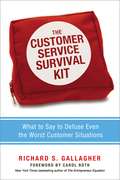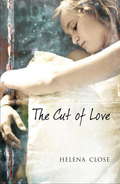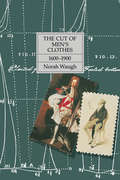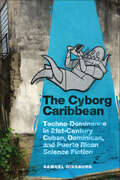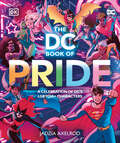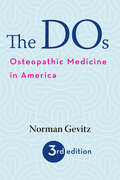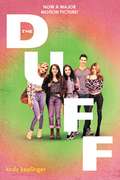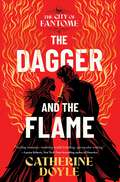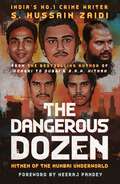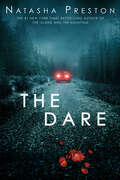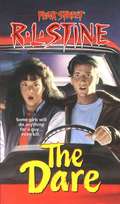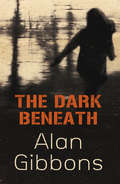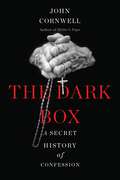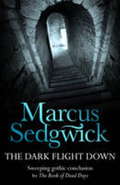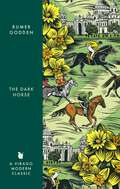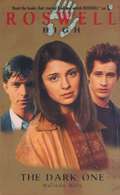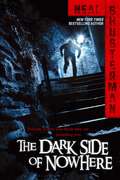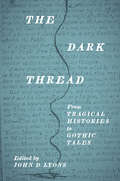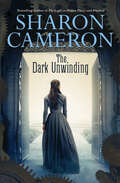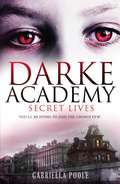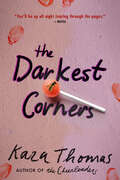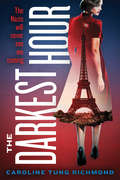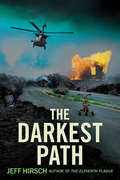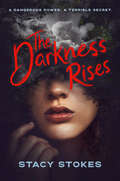- Table View
- List View
The Customer Service Survival Kit: What to Say to Defuse Even the Worst Customer Situations
by Richard GallagherIssues with customers can send even the most seasoned service professionals into red alert. Discover how to effectively communicate your way out of any difficult spot.By providing clear techniques, behavioral science insights, case studies, situation-specific advice, and actionable practice exercises, workplace communication expert Richard Gallagher has created a resource that can help anyone master the delicate art of communication.In The?Customer Service Survival Kit, you&’ll find tangible tips and tricks to help you discover:how to lean into criticism,how to avoid trigger phrases that can make bad situations worse,the secret to helping people feel heard,how to safely deliver bad news,and how to become immune to intimidation--among many other skills.The Customer Service Survival Kit recognizes that the worst customer situations demand more of front-line employees than good intentions and the right attitude. With the help of these valuable insights, lessons, and indispensable problem-solving tools, your organization holds the key to radically improving its customer service reputation.
The Cut of Love
by Helena CloseThe voices of Jane's mum and dad ring in her ears. These days, they never stop fighting. She squeezes her eyes shut and wishes she could do the same with her ears. She resorts to the only thing she knows to help her cope. When her best friend Leah questions her about the criss-cross marks on her arms, Jane blames the cat. And when Leah tells her that true best friends shouldn't keep secrets from each other, Jane knows that's only talk. Everyone has secrets, even Leah. She never mentions her brother Jack, sometimes it's as if he never even existed. And yet, his absence is so palpable you can almost touch it.Alison, Jack's mum, escapes into her dreams, where she becomes reunited with her dead son. It is less than a year since he was killed in a tragic road accident, for which she blames herself, and the pain still feels like an open wound in her chest. She struggles to hold herself together for the sake of her family, but the strain is telling, and when she and Jane's dad Dermot meet, it feels briefly that they are kindred spirits. But darker conclusions lie in wait.The Cut of Love explores two journeys of the heart, one of an adolescent girl, the other of a middle-aged woman. As their paths interweave, a remarkable story unfolds - at once modern and timeless -that is bitingly real, deeply tender and utterly unforgettable.
The Cut of Men's Clothes: 1600-1900
by Norah WaughThis book traces the evolution of the style of men's dress through a sequence of diagrams accurately scaled down from patterns of actual garments, many of them rare museum specimens. The plates have been selected with the same purpose. Some are photographs of suits for which diagrams have also been given; others, reproduced from paintings and old prints, show the costume complete with its accessories. Quotations from contemporary sources--from diaries, travelers' accounts and tailors' bills--supplement Norah Waugh's text with comments on fashion and lively eyewitness descriptions.
The Cyborg Caribbean: Techno-Dominance in Twenty-First-Century Cuban, Dominican, and Puerto Rican Science Fiction (Critical Caribbean Studies)
by Samuel GinsburgThe Cyborg Caribbean examines a wide range of twenty-first-century Cuban, Dominican, and Puerto Rican science fiction texts, arguing that authors from Pedro Cabiya, Alexandra Pagan-Velez, and Vagabond Beaumont to Yasmin Silvia Portales, Erick Mota, and Yoss, Haris Durrani, and Rita Indiana Hernandez, among others, negotiate rhetorical legacies of historical techno-colonialism and techno-authoritarianism. The authors span the Hispanic Caribbean and their respective diasporas, reflecting how science fiction as a genre has the ability to manipulate political borders. As both a literary and historical study, the book traces four different technologies—electroconvulsive therapy, nuclear weapons, space exploration, and digital avatars—that have transformed understandings of corporality and humanity in the Caribbean. By recognizing the ways that increased technology may amplify the marginalization of bodies based on race, gender, sexuality, and other factors, the science fiction texts studied in this book challenge oppressive narratives that link technological and sociopolitical progress. .
The DC Book of Pride: A Celebration of DC's LGBTQIA+ Characters
by DK Jadzia AxelrodDiscover the rich history of DC&’s LGBTQIA+ Superheroes in this inspiring gift-title featuring detailed character profiles and comic book artworkCelebrate Pride with DC&’s LGBTQIA+ Superheroes. Written and curated by DC expert Jadzia Axelrod, The DC Book of Pride profiles more than 50 LGBTQIA+ characters in detail, including Harley Quinn, Superman, Nubia, Robin, Batwoman, Aqualad, Dreamer, Green Lantern, and many more. Discover their fascinating origins, amazing superpowers, and key storylines. This title is an indispensable and celebratory companion to the DC Pride comic books. With stunning comic book artwork and an exclusive cover artwork by renowned DC comics illustrator Paulina Ganucheau, this book is a perfect addition to the collection of any DC fan. All DC characters and elements © & ™ DC Comics. (s23)
The DK Handbook Second Edition with Exercises
by Dennis A. Lynch Anne Frances WysockiTransforming expectations for textbooks, The DK Handbook with Exercises 2/e presents information in newly accessible, scientifically tested, and student-friendly ways. Never before seen in the handbook market, The DK Handbook's design is a true marriage of visual and textual content, in which each topic is presented in self-contained, two-page spreads for at-a-glance referencing. Explanations are concise and "chunked" to be more approachable and appealing for today's readers, and accompanying visuals truly teach - making concepts and processes visible to students. The ground-breaking layout creates a consistent look and feel that helps students connect with the material, find information, and recognize solutions to writing problems they often don't have names for.
The DOs: Osteopathic Medicine in America
by Norman GevitzA comprehensive portrait of the osteopathic medical profession.Overcoming suspicion, ridicule, and outright opposition from the American Medical Association, the osteopathic medical profession today serves the health needs of more than thirty million Americans. Osteopathic medicine is now the fastest-growing segment of the US physician and surgeon population. In The DOs, historian Norman Gevitz chronicles the development of this controversial medical movement from its nineteenth-century origins in the American Midwest to the present day. He describes the philosophy and practice of osteopathy, as well as the impact of osteopathic medicine on health care.In print continuously since 1982, The DOs has now been thoroughly updated and expanded. From the theories underlying the use of spinal manipulation developed by osteopathy's founder, Andrew Taylor Still, Gevitz traces the movement's early success, despite attacks from the orthodox medical community. He also recounts the efforts of osteopathic medical colleges to achieve parity with institutions granting MD degrees and looks at the continuing effort by osteopathic physicians and surgeons to achieve greater recognition and visibility.Bringing additional light to the philosophical origins and practices of the osteopathic movement, as well as the historic debates about which degree to offer its graduates, this volume • chronicles the challenges the profession has faced in the early decades of the twenty-first century • addresses recent challenges to the osteopathic medical profession• explores efforts at preserving osteopathy's autonomy and distinctiveness• offers a new perspective on the future of osteopathic medicine Based on an extensive examination and evaluation of primary sources, as well as countless interviews with individuals both inside and outside osteopathic medicine, The DOs is the definitive history of the osteopathic medical profession.
The DUFF: (Designated Ugly Fat Friend)
by Kody KeplingerSeventeen-year-old Bianca Piper is cynical and loyal, and she doesn't think she's the prettiest of her friends by a long shot. She's also way too smart to fall for the charms of man-slut and slimy school hottie Wesley Rush. In fact, Bianca hates him. And when he nicknames her "Duffy," she throws her Coke in his face. But things aren't so great at home right now. Desperate for a distraction, Bianca ends up kissing Wesley. And likes it. Eager for escape, she throws herself into a closeted enemies-with-benefits relationship with Wesley. Until it all goes horribly awry. It turns out that Wesley isn't such a bad listener, and his life is pretty screwed up, too. Suddenly Bianca realizes with absolute horror that she's falling for the guy she thought she hated more than anyone.
The Dagger and the Flame (The City of Fantome)
by Catherine Doyle&“Sizzling romance, stunning worldbuilding, spectacular writing.&” —Lauren Roberts, New York Times bestselling author of Powerless In the dark underbelly of a beautiful city, two rival assassins are pitted against each other in a deadly game of revenge, where the most dangerous mistake of all is falling in love in this &“steamy&” (Publishers Weekly) young adult fantasy.In Fantome, a kingdom of cobbled streets, flickering lamplight, beautiful buildings, and secret catacombs, Shade-magic is a scarce and deadly commodity controlled by two enemy guilds: the Cloaks and the Daggers—the thieves and the assassins. On the night of her mother&’s murder, eighteen-year-old Seraphine runs for her life. Seeking sanctuary with the Cloaks, Sera&’s heart is set on revenge. But are her secret abilities a match for the dark-haired boy whose quicksilver eyes follow her around the city? Nothing can prepare Sera for the moment she finally comes face-to-face with Ransom, heir to the Order of Daggers. And Ransom is shocked to discover that this unassuming farm girl wields a strange and blazing magic he has never seen before. As the Cloaks and the Daggers grapple for control of Fantome&’s underworld, Sera and Ransom are consumed by the push and pull of their magic…and the deadly spark and terrible vengeance that keeps drawing them back together.
The Dangerous Dozen: Hitmen of the Mumbai Underworld
by S. Hussain ZaidiMunna Jhingada, Farid Tanasha, Baba Reddy… hitmen and executioners all. Each with haunting tales to tell. The executioner has no remorse. He is the man who strikes the fear of his boss in everybody&’s heart. While he has no criminal empire of his own, his barbaric bio-sketch could fill several police case diaries. Those who live by the bullet die by the bullet – almost every last one of them. But in their short reign of terror, they leave a trail of devastation in their wake. In this no-holds-barred book, India&’s No. 1 crime writer, S. Hussain Zaidi, backed by years of behind-the-scenes work, provides an insight into the lives of twelve of the most vicious and fearless hitmen of Mumbai, giving readers a first-hand insight into what fuels the men behind some of the bloodiest battles and showdowns in the city.
The Dare
by Natasha Preston Natasha Green#1 New York Times and USA TODAY bestselling author Natasha Preston is back with another pulse-pounding, twisty read!Would you accept the dare?In Marley&’s town, seniors are given a prank as a rite of passage…a dare, if you will. The dares start out simple…egging houses, balloons filled with glitter, chickens running loose in the halls.But this is no child&’s play.Accepting a dare means you could be expelled, arrested, or worse. No one wants to back down from a dare. But saying yes has consequences, too…
The Dare (Fear Street Superchillers #21)
by R.L. StineJohanna Wise has always longed to be part of Dennis Arthur’s rich, popular crowd, and she can’t believe it when he finally asks her out. She thought she’d do anything to keep Dennis, but when he dares her to kill their teacher, she’s not so sure. Will she really kill for love?
The Dark Beneath
by Alan GibbonsWinner of the Blue Peter Book Award, The Dark Beneath tells the chilling tale of how one girl's friendship with three refugees could cost her life. 'Today I shot the girl I love'.GCSE's are over and sixteen-year-old Imogen is looking forward to a perfect, lazy English summer. But her world is turned upside down by three refugees, all hiding from life. Anthony is fourteen, already an outcast, bullied and shunned by his peers. Farid is an asylum seeker from Afghanistan, who has travelled across continents seeking peace. And Gordon Craig is a bitter, lonely man. She knows all of them, but she doesn't know how dangerous they are. Being part of their lives could cost Imogen her own.Supercharged with tension and drama, Alan Gibbon's novel is about what happens when the fabric of normality is ripped apart exposing the terrifying dark beneath.
The Dark Box: A Secret History of Confession
by John CornwellA bestselling journalist exposes the connection between the Catholic Church’s sexual abuse crisis and the practice of confession.
The Dark Flight Down
by Marcus SedgwickSweeping, mesmerising gothic fantasy full of magic and intrigue, from award-winning author, Marcus Sedgwick. The action-packed and enthralling conclusion to THE BOOK OF DEAD DAYS.Welcome to a world of dark magic, lurking evil and beguiling mystery. Following their thrilling journey in THE BOOK OF DEAD DAYS, Boy and Willow are plunged into a world of gilded finery and splendour as they are held captive in the palace of the Emperor Frederick. But beneath its golden veneer lies cruelty, madness and desperation. They must face terrible danger as they confront the whirlwind furies of the Emperor and the calculating ambitions of his confidante, Maxim. What's more, they must follow a deadly trail which will lead them to the Phantom . . . The truth about Boy's identity is one among many shattering secrets as THE BOOK OF DEAD DAYS is opened for the final time.
The Dark Horse: A Virago Modern Classic
by Rumer GoddenBy the author of Black Narcissus.'One of our best and most captivating novelists' Philip HensherAll horses can walk - some badly, some well, but to a few is given a gift of movement feline in its grace, a slouching, flowing continuous movement that is a joy to watch. Dark Invader strode in glorious rhythm, his great shoulders rolling, muscles rippling along his flanks under the satin skin.'Dark Invader is a beautifully bred racehorse, but after a disappointing first season he is sold in disgrace and shipped from England to Calcutta. With love and gentle handling 'Darkie' wins the hearts of the people and becomes the firm favourite for India's most famous race, the Viceroy Cup. But three days before the race Dark Invader disappears. Can he be found before it is too late?
The Dark One: The Dark One (Roswell High #9)
by Melinda MetzTrue love never dies. Isabel has run away from home, and Max knows her life is in danger. He has to find her and save her, but time is ticking away. Alex is back on Earth, and he's a changed man. He looks better, feels better, and is ready to live life to the fullest -- without Isabel Evans. Little does he know he's the only person that can help the ailing Isabel. Will Alex be able to put aside his pride and save the life of his former love?
The Dark Side of Nowhere
by Neal ShustermanA classic science fiction novel from bestselling author Neal Shusterman is back in print.Jason is having a bad day. The kind of day when you just don’t feel like yourself. Only for Jason, it’s not just a feeling. He really isn’t himself. Not anymore. Who is he? That’s the problem. Jason isn’t sure. And it’s not just him. Everyone in town is acting weird. His friends. His parents. Everyone. Billington is usually such a normal town. As Jason is about to discover, nothing will ever be normal again….
The Dark Thread: From Tragical Histories to Gothic Tales (Early Modern Exchange)
by John D. LyonsIn The Dark Thread, scholars examine a set of important and perennial narrative motifs centered on violence within the family as they have appeared in French, English, Spanish, and American literatures. Over fourteen essays, contributors highlight the connections between works from early modernity and subsequent texts from the eighteenth through the twentieth centuries, in which incidents such as murder, cannibalism, poisoning, the burial of the living, the failed burial of the dead, and subsequent apparitions of ghosts that haunt the household unite "high" and "low" cultural traditions. This book questions the traditional separation between the highly honored genre of tragedy and the less respected and generally less well-known genres of histoires tragiques, gothic tales and novels, and horror stories.
The Dark Unwinding (Dark Unwinding (scholastic) Ser.)
by Sharon CameronFrom the award-winning author of Rook comes a delicious and twisty tale, filled with spine-tingling intrigue, juicy romance, and dangerous family secrets.When a rumor that her uncle is squandering away the family fortune surfaces, Katharine Tulman is sent to his estate to have him committed to an asylum. But instead of a lunatic, Katharine discovers a genius inventor with his own set of childlike rules, who is employing a village of nine hundred people rescued from the workhouses of London. Katharine becomes torn between protecting her own livelihood and preserving the peculiar community she grows to care for deeply -- a conflict made more complicated by her developing feelings for her uncle's handsome apprentice. As the mysteries of the estate begin to unravel, it is clear that not only is her uncle's world at stake, but also the state of England as Katharine knows it. With twists and turns at every corner, this extraordinary adventure will captivate readers with its thrills and romance.
The Darke Academy: Secret Lives (The Darke Academy #1)
by Gabriella PooleThe Darke Academy is a school like no other. <P><P>An élite establishment that moves to an exotic new city every term, its students are impossibly beautiful, sophisticated and rich. And the more new scholarship girl Cassie Bell learns about the Academy, the more curious she becomes. What sinister secrets are guarded by the Few - the select group of students who keep outsiders away? Who is the dark stranger prowling the corridors at night? And what really happened a year earlier, when the last scholarship girl died in mysterious circumstances?<P>One thing Cassie will discover is that a little knowledge may be a dangerous thing, but knowing too much can be deadly...
The Darkest Corners
by Kara Thomas"Gripping from start to finish . . . with twists that left me shocked."—Victoria Aveyard, #1 New York Times bestselling author of Red Queen For fans of Gillian Flynn and Pretty Little Liars, The Darkest Corners is a psychological thriller about the lies little girls tell, and the deadly truths those lies become. There are secrets around every corner in Fayette, Pennsylvania. Tessa left when she was nine and has been trying ever since not to think about what happened there that last summer. She and her childhood best friend Callie never talked about what they saw. Not before the trial. And certainly not after. But ever since she left, Tessa has had questions. Things have never quite added up. And now she has to go back to Fayette—to Wyatt Stokes, sitting on death row; to Lori Cawley, Callie&’s dead cousin; and to the one other person who may be hiding the truth. Only the closer Tessa gets to what really happened, the closer she gets to a killer—and this time, it won&’t be so easy to run away.And don't miss Kara's next "eerie and masterly psychological thriller" Little Monsters—on sale now (SLJ)!
The Darkest Hour (Scholastic Press Novels)
by Caroline Tung RichmondMy name is Lucie Blaise.I am sixteen years old.I have many aliases, but I am none of the girls you see.What I am is the newest recruit of Covert Ops.And we are here to take down Hitler.After the Nazis killed my brother on the North African front, I volunteered at the Office of Strategic Services in Washington to do my part for the war effort. Only instead of a desk job at the OSS, I was tapped to join the Clandestine Operations--a secret espionage and sabotage organization of girls. Six months ago, I was deployed to German-occupied France to gather intelligence and eliminate Nazi targets.My current mission: Track down and interrogate a Nazi traitor about a weapon that threatens to wipe out all of Western Europe. Then find and dismantle the weapon before Hitler detonates it. But the deeper I investigate, the more danger I'm in. Because the fate of the free world hangs in the balance, and trusting the wrong person could cause millions of lives to be lost. Including my own.
The Darkest Path
by Jeff HirschUSA TODAY bestselling author Jeff Hirsch once again creates a futuristic world with stunning, dramatic realism.A civil war rages between the Glorious Path--a militant religion based on the teachings of a former US soldier--and what's left of the US government. Fifteen-year-old Callum Roe and his younger brother, James, were captured and forced to convert six years ago. Cal has been working in the Path's dog kennels, and is very close to becoming one of the Path's deadliest secret agents. Then Cal befriends a stray dog named Bear and kills a commander who wants to train him to be a vicious attack dog. This sends Cal and Bear on the run, and sets in motion a series of incredible events that will test Cal's loyalties and end in a fierce battle that the fate of the entire country rests on.
The Darkness Rises
by Stacy StokesA gripping speculative thriller perfect for fans of Lauren Oliver and Ginny Myers Sain, about one girl with the power to see death before it happens—and the terrible consequences she faces when saving someone goes wrong.SOMEONE WANTS REVENGE…Whitney knows what death looks like. Since she was seven, she&’s seen it hover over strangers&’ heads in dark, rippling clouds. Sometimes she can save people from the darkness. Sometimes she can&’t. But she&’s never questioned if she should try. Until the unthinkable happens—and a person she saves becomes the perpetrator of a horrific school shooting.Now Whitney will do anything to escape the memory of last year&’s tragedy and the guilt that gnaws at her for her role in it. Even if that means quitting dance—the thing she loves most—and hiding her ability from her family and friends. But most importantly, no one can know what really happened last year.Then Whitney finds an ominous message in her locker and realizes someone knows her secret. As the threats pile up, one thing becomes clear—someone wants payback for what she did. And if she&’s going to survive the year, she must track down whoever is after her before it&’s too late.
